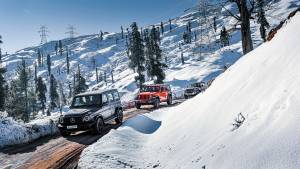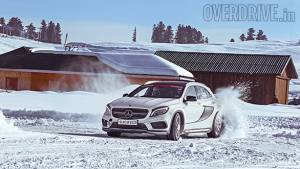Four point guide to driving on snow-covered roads
Driving through snow and ice requires certain changes to the way you drive. Here are some tips to keep you pointing in the right direction.
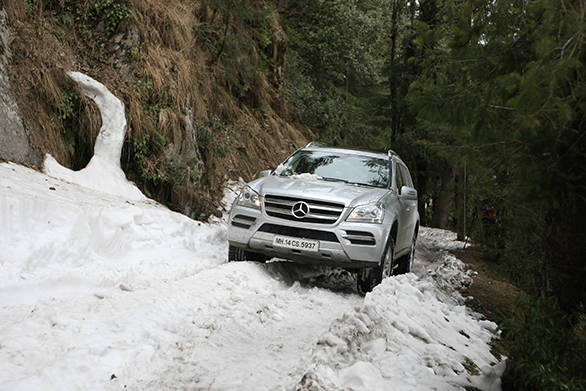 Driving through snow and ice requires certain changes to the way you drive
Driving through snow and ice requires certain changes to the way you drive
Why is it different from daily driving?
Driving through the snow brings about different challenges. Where the snow is deep, it's like driving through sand and your vehicle can easily get stuck. Snow also fills the grooves of the tyres and reduces the level of grip on offer. Melted snow can also freeze over the road in a thin transparent layer called black ice and is very hard to spot.
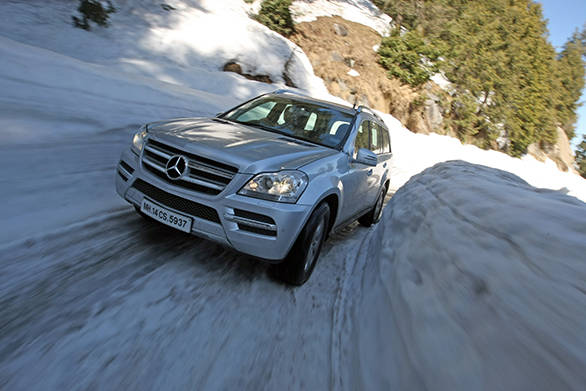 Grip tends to be at a premium as your tyres struggle to gain traction on the slippery surface
Grip tends to be at a premium as your tyres struggle to gain traction on the slippery surface
Gently does it
When driving over snow and ice, grip tends to be at a premium as your tyres struggle to gain traction on the slippery surface. You need to control your inputs to steering, accelerator and brakes to allow your tyres the best possible chance of finding grip. While approaching a turn try to finish your braking in a straight line and then start to turn into the corner. Also plan to take corners at a much slower pace than you regularly would. The same applies to braking and accelerating too. Use smooth throttle inputs to ensure you don't spin the driven wheels while accelerating and a smooth gradual pressure on the brake pedal to ensure that you don't lock your wheels when braking.
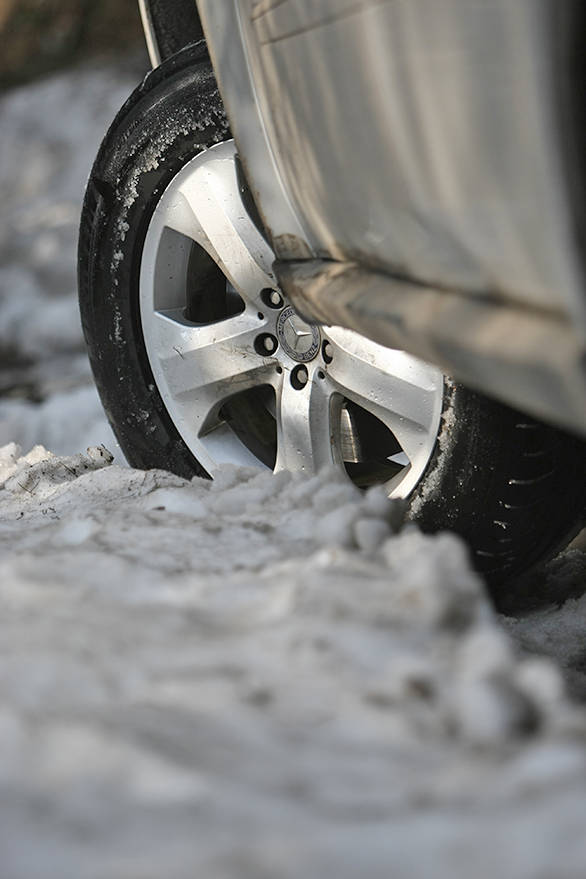 Snow also fills the groves of the tyres and reduces the level of grip on offer
Snow also fills the groves of the tyres and reduces the level of grip on offer
Be weary
Always be cautious while driving through snow. If you are cautious by nature as a driver then be even more cautious when it's snowing. Leave large gaps between vehicles in front of you allowing you enough time to react in an emergency situation.
Get a feel of the road conditions. When the road is empty, take a short stab at the throttle and then later a short dab on the brakes as well. This will give you an idea of what grip levels are available. When road conditions change you can try this exercise (when safe) again. Also beware that while you may be a capable driver there will be others who are much less capable of controlling their vehicles.
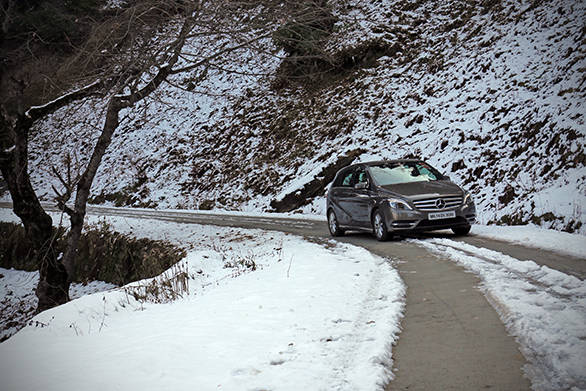 Melted snow can also freeze over the road in a thin transparent layer called black ice and is very hard to spot
Melted snow can also freeze over the road in a thin transparent layer called black ice and is very hard to spot
Know your vehicle
Always make sure that your car is in perfect working condition before winter sets in and it's best to get a complete service done. Your tyres also need to be in perfect nick to tackle the conditions and ensure you have the best possible grip.
It's also important to know which set of wheels your engine drives. There are front wheel drive cars or FWD, rear wheel drive cars or RWD, and four wheels drives or 4WD. Knowing which wheels are driven in your car is important as each behave differently when traction is lost.
For example, in a slide where the rear of the car steps out, turning in the direction of the slide or counter steering and gently accelerating in a FWD car will stop the slide. In the same situation with a RWD car, getting off the throttle will stop the slide. And while 4WD cars are more stable while accelerating, they do nothing while braking, so you are not invincible. You still need to be careful.
For an opportunity to test these techniques while having an awesome time with the OVERDRIVE team, please visit: http://overdrive.in/winterdrive/register.php
 Turning in the direction of the slide or counter steering and gently accelerating in a FWD car will stop the slide
Turning in the direction of the slide or counter steering and gently accelerating in a FWD car will stop the slide
